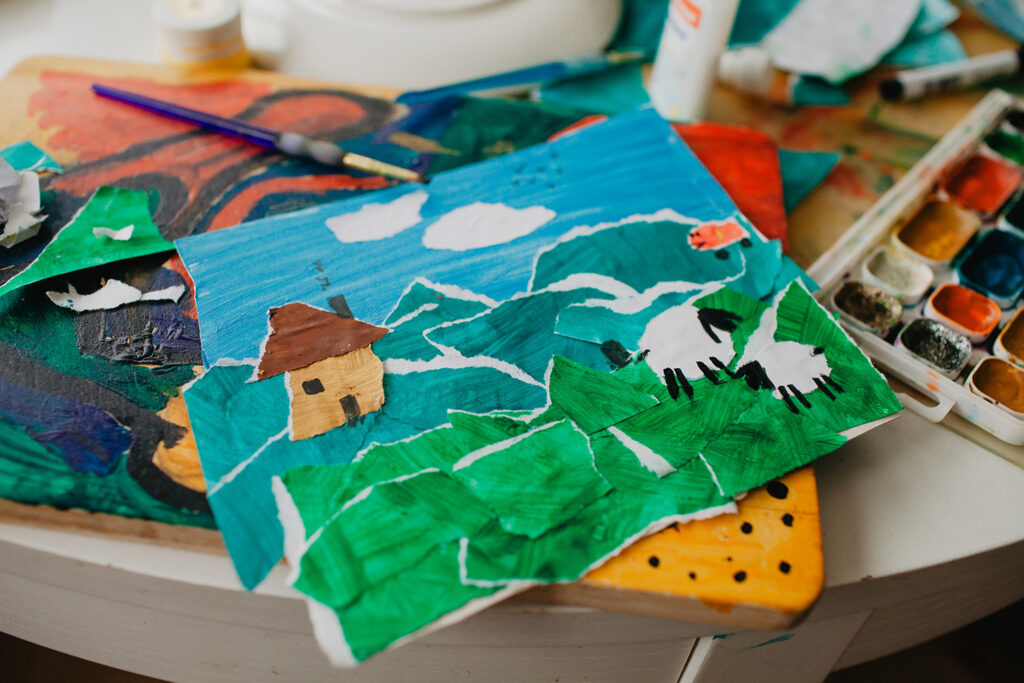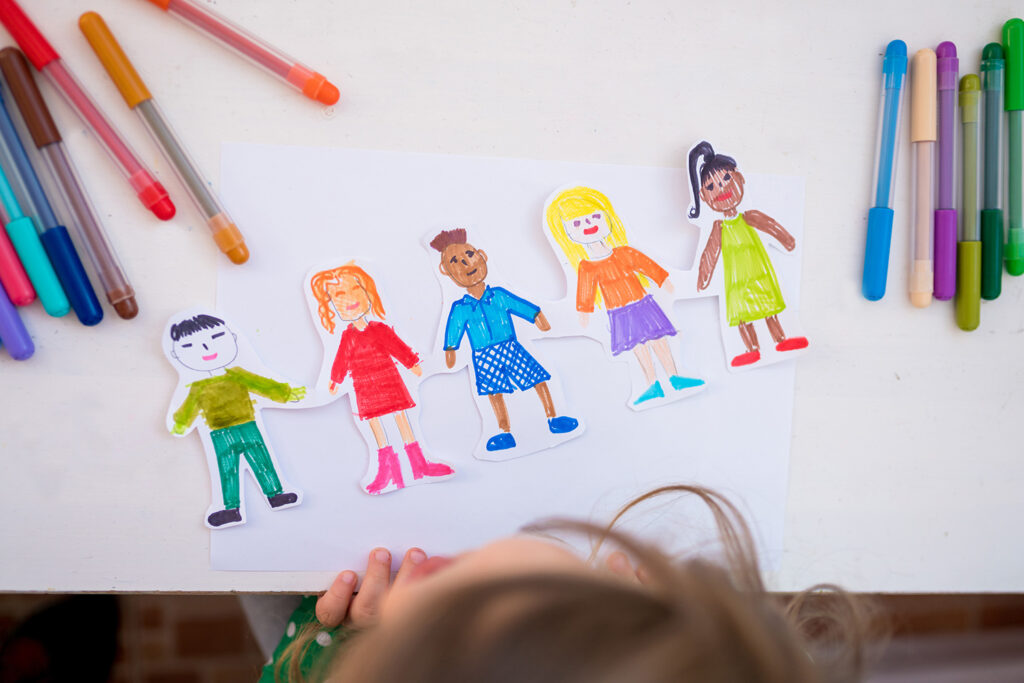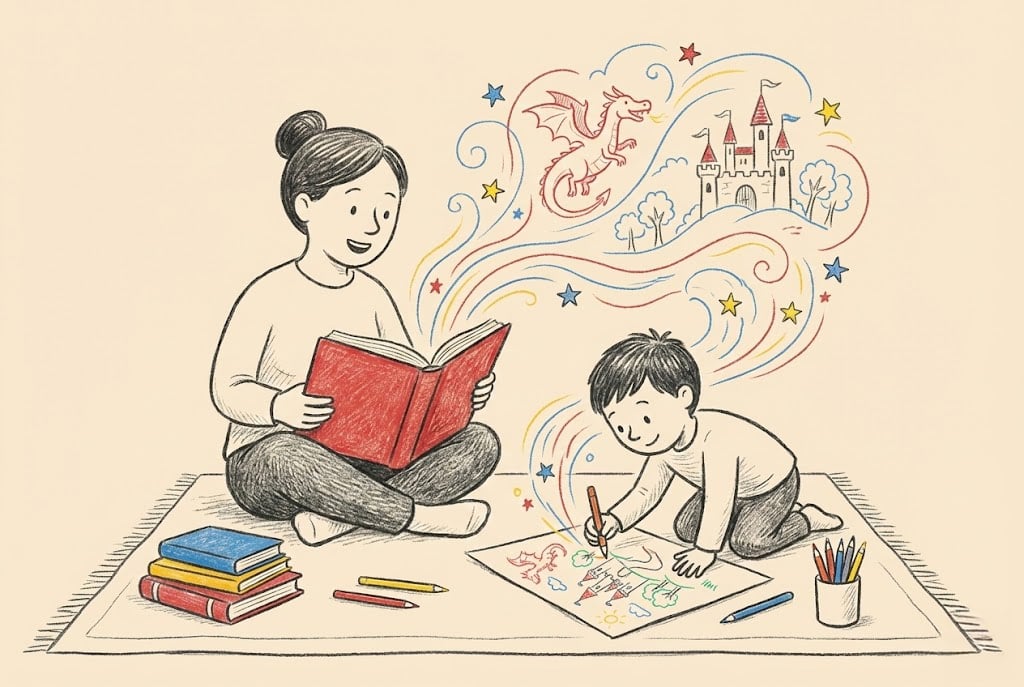Contents
Children’s Art Week is the perfect excuse to get out the crayons, splash a bit of paint around (hopefully not on the cat), and let creativity run wild. But it’s also a brilliant time to weave in some reading — because books and art? They’re best friends.
When children draw what they’ve read, imagine new endings, or turn their favourite characters into felt-tip masterpieces, something clicks. They don’t just *hear* a story — they feel it, see it, and make it their own.
Here are some fun, low-pressure ways to bring books and art together this Children’s Art Week — no glitter explosions required (unless you’re into that sort of thing).

Why art + reading = magic
Stories want to be seen
Every story has a picture hiding inside it — and kids are brilliant at spotting them. Whether it’s a grumpy dragon, a mysterious forest, or a world made of jellybeans, reading helps children create entire universes in their heads. Drawing brings those universes to life.
- Boosts comprehension: If they can draw it, they’ve probably understood it.
- Fires up imagination: Books plant the seed, art helps it grow (into a sparkly unicorn tree, sometimes).
- Builds confidence: Making something from a story gives kids a sense of ownership. “I made this!” is powerful stuff.
Fun ideas to try this Children’s Art Week
📖 Make your own mini book
Fold some paper, grab the felt tips, and boom — you’ve got a DIY publishing house. Let your child write and illustrate their own story (or re-tell a favourite one in their own words).
- Start with a silly sentence and take turns adding to it.
- Use stickers, collage scraps or stamps for extra flair.
- Display it proudly — the fridge is now your family’s official library shelf.
Draw a scene from a favourite book
This one’s simple but effective. Ask: “What’s the most exciting/funny/sad bit of the story?” Then get drawing.
- Let them choose the medium — pencil, paint, chalk, digital, spaghetti…
- Talk about what’s happening in the scene and how the characters feel.
- Bonus round: Can they show what happens next?

Act it out (with props!)
If your child’s more of a performer than a painter, get theatrical.
- Read a story together and pick a scene to act out.
- Make simple props or costumes (a tea towel can do wonders).
- Record it to send to family — or just enjoy the front-row seats.
Illustrate a new ending
What if the wolf opened the door and found… a party? Let kids change the ending of a story and draw what happens instead. It gets them thinking about plot, character and cause-and-effect — all while having a giggle.
Why this all works (sneaky learning alert)
It strengthens reading muscles
Linking art to stories helps children remember what they’ve read and understand it better — especially for visual learners.
It helps with emotional literacy
Drawing how characters feel helps children make sense of big emotions — both in books and in real life.
It builds communication skills
Whether they’re describing their drawing or narrating their comic strip, children are practising how to share their thoughts clearly (and with flair).
How Reading Chest can help
Looking for fresh inspiration? With Reading Chest, you can keep the stories coming — so there’s always something new to spark creativity.
- Beautifully illustrated books at just the right level — perfect for drawing inspiration.
- Easy book swaps — so kids never get bored of the same old titles.
- Delivered straight to your door (no soggy library slips required).
Let’s see your masterpieces!
We’d love to see how your child turns stories into art. Share their book-inspired creations with us on Twitter/X, Facebook, or Instagram. Who knows? They might just inspire someone else’s next reading adventure.
Need more ideas? Browse our blog for playful ways to help your child fall in love with reading — one glitter-glued masterpiece at a time.
Jen Appleyard
Jen Appleyard is a mum of two boys and the owner of Reading Chest. She took over the business in 2024 with one goal: to make early reading easier — and far more joyful — for families.
